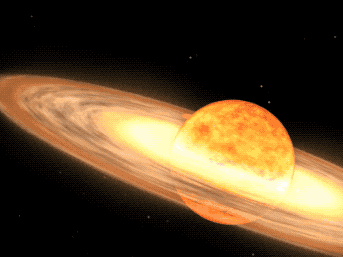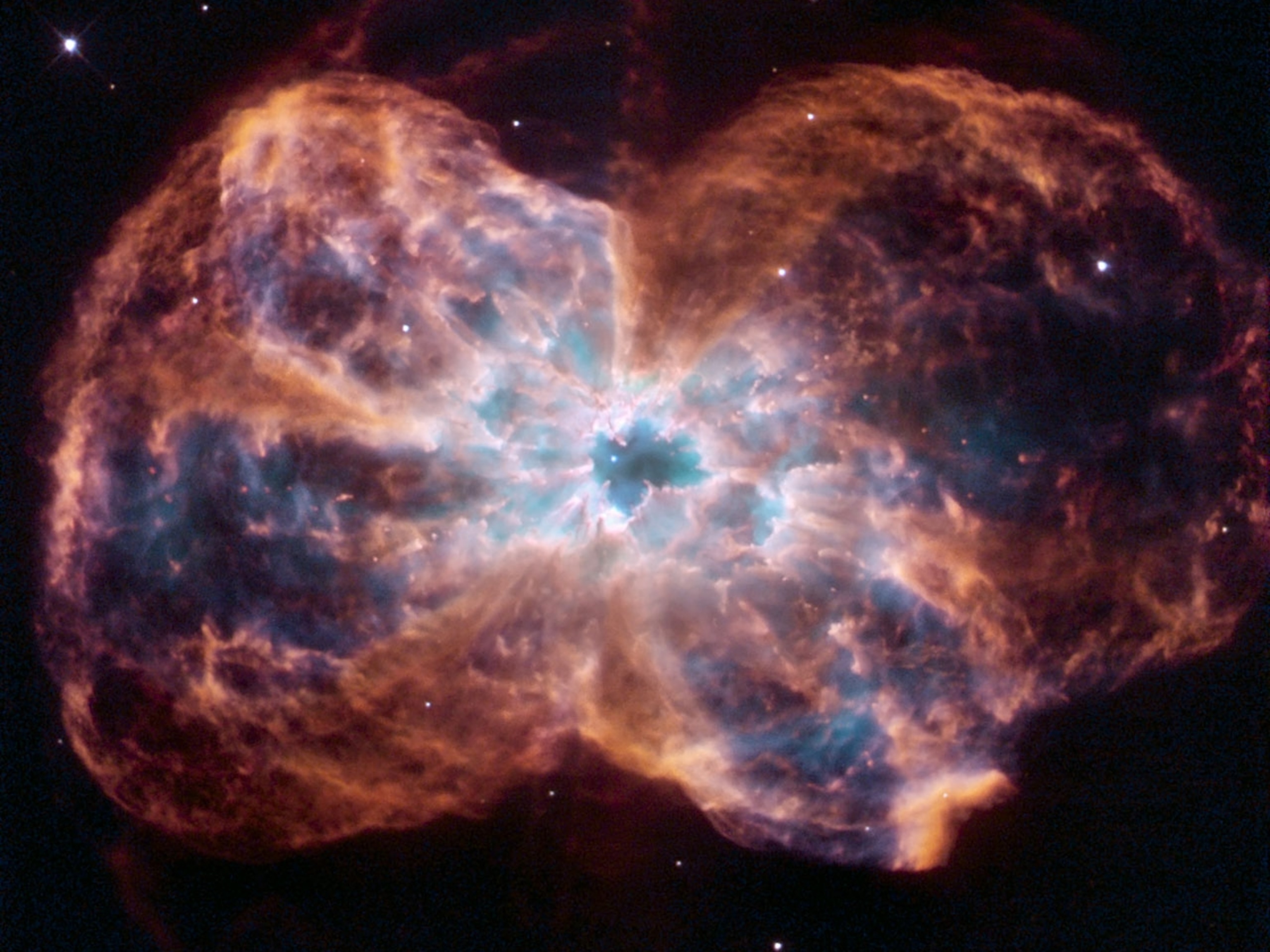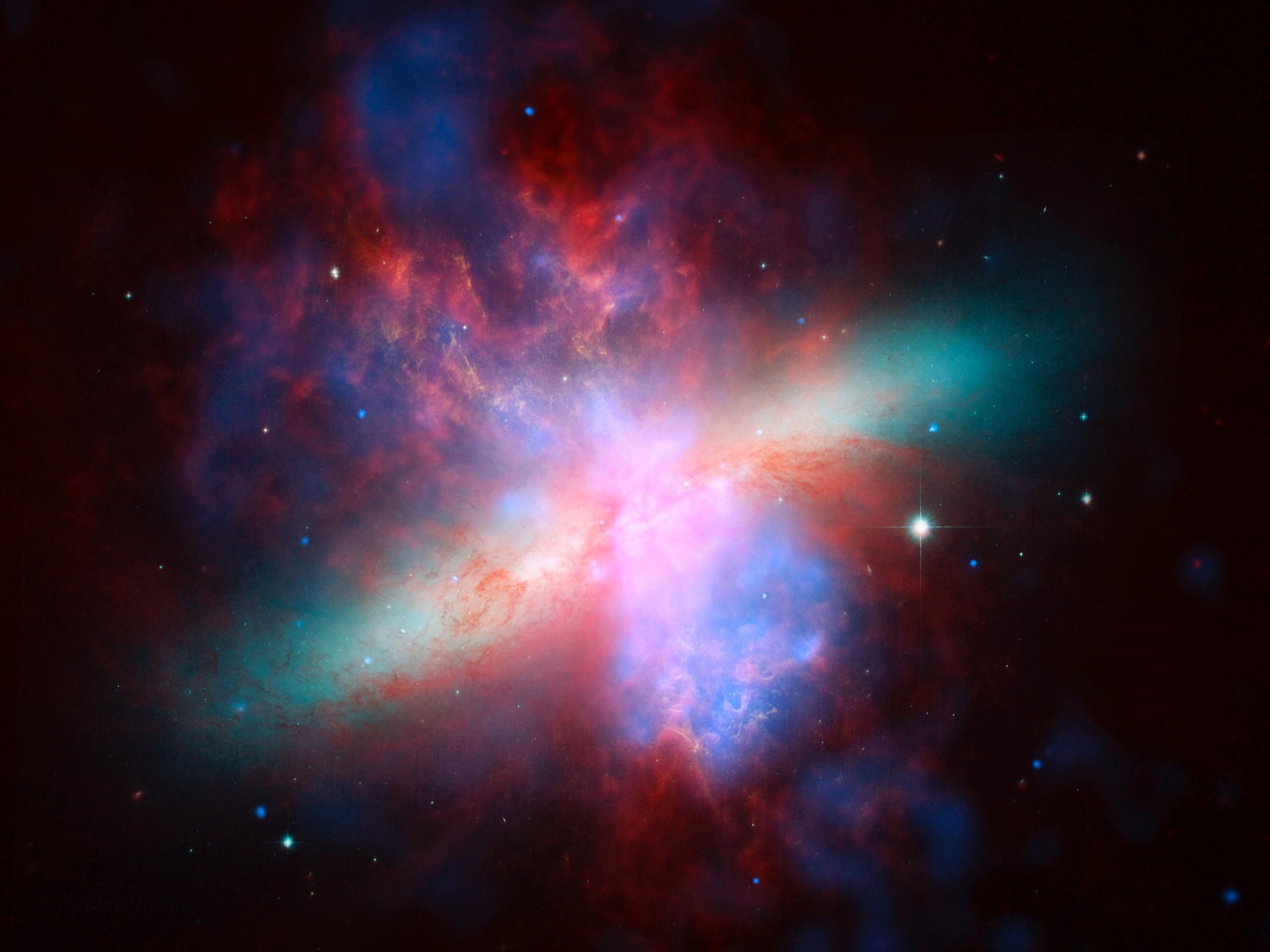Peek Inside a Star System That May Be About to Blow
The roiling stars of Eta Carinae could explode any day, so it’s probably worth staring at them while they still exist.
If I could choose one star to go supernova during my lifetime, it would be either Betelgeuse—the red giant marking Orion’s right shoulder—or Eta Carinae, one of the biggest, weirdest stars in the sky.
A blown-up Betelgeuse would be easier to see from my house on the U.S. West Coast, but Eta Carinae annihilating itself would be an incomparably spectacular sight: a super-duper nova that astronomers say could be visible from the Southern Hemisphere during daylight hours.
If we’re lucky, that’ll happen soon, but forecasts for Eta Carinae’s ultimate demise aren’t entirely reliable just yet. The star could blow today or 10,000 years from now, or maybe it already exploded a few thousand years ago and, thanks to its distance from us, we’re still waiting for those photons to arrive on Earth.
Recently, using the Very Large Telescope (VLT) in Chile, scientists took their most detailed look yet at the tempestuous, roiling pair of stars comprising Eta Carinae, a stellar system that could easily be described almost exclusively using superlatives.
Eta Carinae is the brightest, most massive object in our cosmic neighborhood. Its primary star is more than 90 times as massive as the sun, and it shines roughly five million times brighter. Circling that giant is a comparatively unimpressive stellar companion that’s just 30 times the sun’s mass, so enveloped in its partner’s glare that no one knew about it until 1996.
Every five and a half years, the smaller star slingshots around the larger star, creating a whirling nucleus of fury that fuels one of the most chaotic astrophysical environments around: Each star is blasting material into space at speeds that exceed six million miles an hour.
Though the violently dancing stars are only 7,500 light-years away, they’re surrounded by a large, dusty nebula that makes them appear dimmer to earthly eyes.

That cloudy shroud includes the Homunculus Nebula, which is a relatively recent addition to the starscape.
In the 1800s, Eta Carinae unleashed a series of eruptions that transformed the system into the brightest point of light in the southern sky. Those eruptions ejected enormous lobes of gas and dust into space—and now, more than a century later, astronomers are still studying the light echoes produced by the spasms.
There’s no telling when Eta Carinae might erupt again or how monstrous the explosion might be, but the system is teetering on the edge of stability. That’s why a team of scientists led by Gerd Weigelt from the Max Planck Institute for Radio Astronomy recently turned the VLT to Eta Carinae and asked it to take a close look at the area between the two stars.
That interstellar region is relatively small, so it took the combined efforts of four telescopes to see it in detail. What the team found is that the blustery winds blown by Eta Carinae’s stars are colliding with one another at such speeds that they heat the interstellar environment to millions of degrees. The colliding particles also release intense x-ray radiation, producing a perplexing pattern of emission that astronomers still can’t quite explain.
What’s more, the team detected an unexpected, fan-shaped structure produced by the cataclysmic pileup of the two stars’ winds.
The system is still very much a mystery, and here’s hoping that astronomers will solve those enigmas before the thing blows. Which, as I said, would be a spectacular sight—just put away your tinfoil hats, because it won’t endanger life on Earth.





